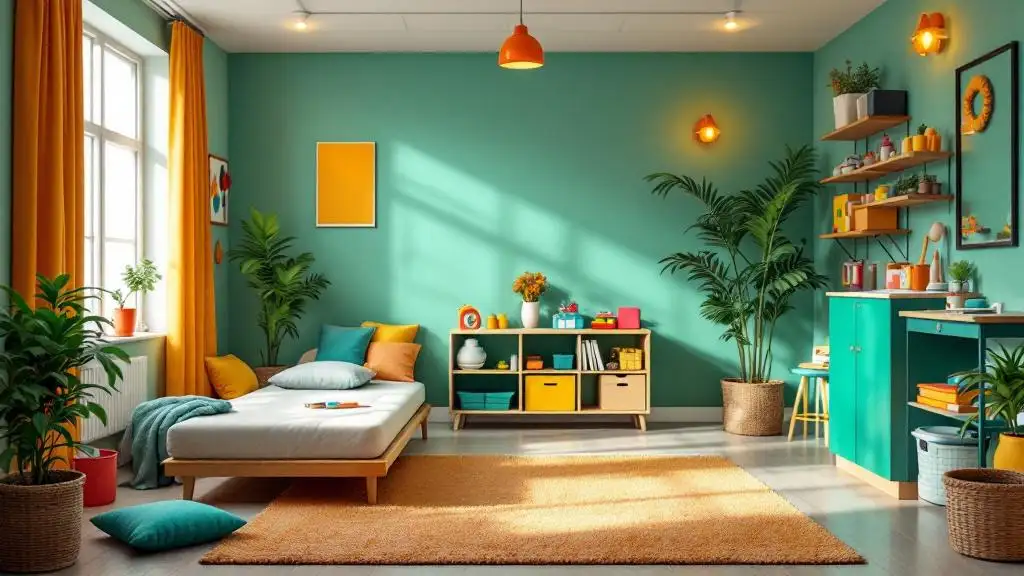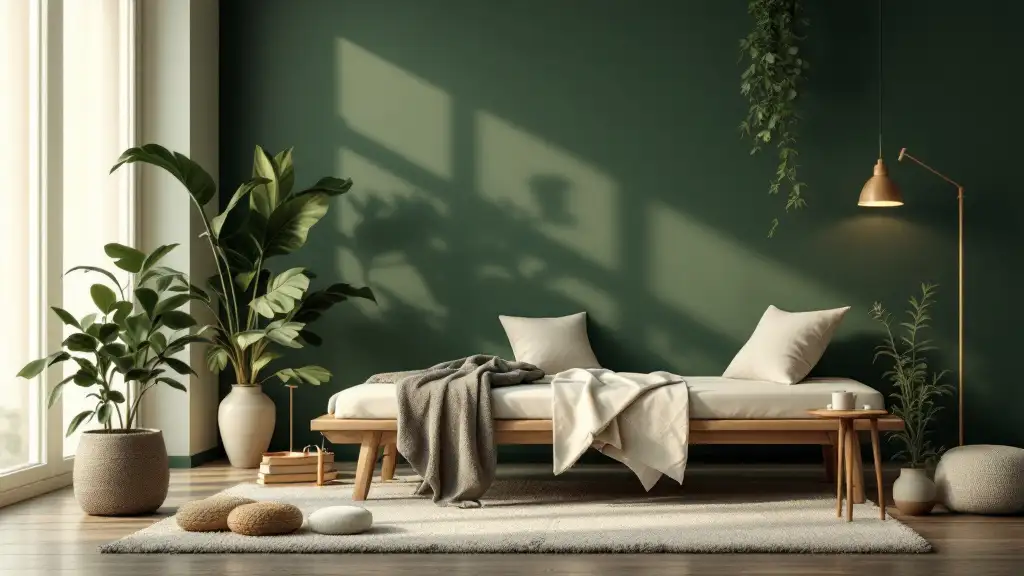Sensory-friendly spaces and their role in supporting autistic children
Creating Calm: The Power of Sensory-Friendly Environments for Autistic Children

Understanding the Sensory World of Autism
Children with autism spectrum disorder (ASD) often experience the world around them in unique ways, particularly through sensory input. Sensory integration challenges—ranging from over- to under-reactivity to everyday stimuli—can profoundly influence behavior, learning, and emotional well-being. This article explores sensory-friendly spaces designed to support autistic children, highlighting their role alongside autism behavioral therapies and offering insights into optimizing environments to promote comfort, development, and success.
What Is Autism Behavioral Therapy and Its Role in Supporting Children?
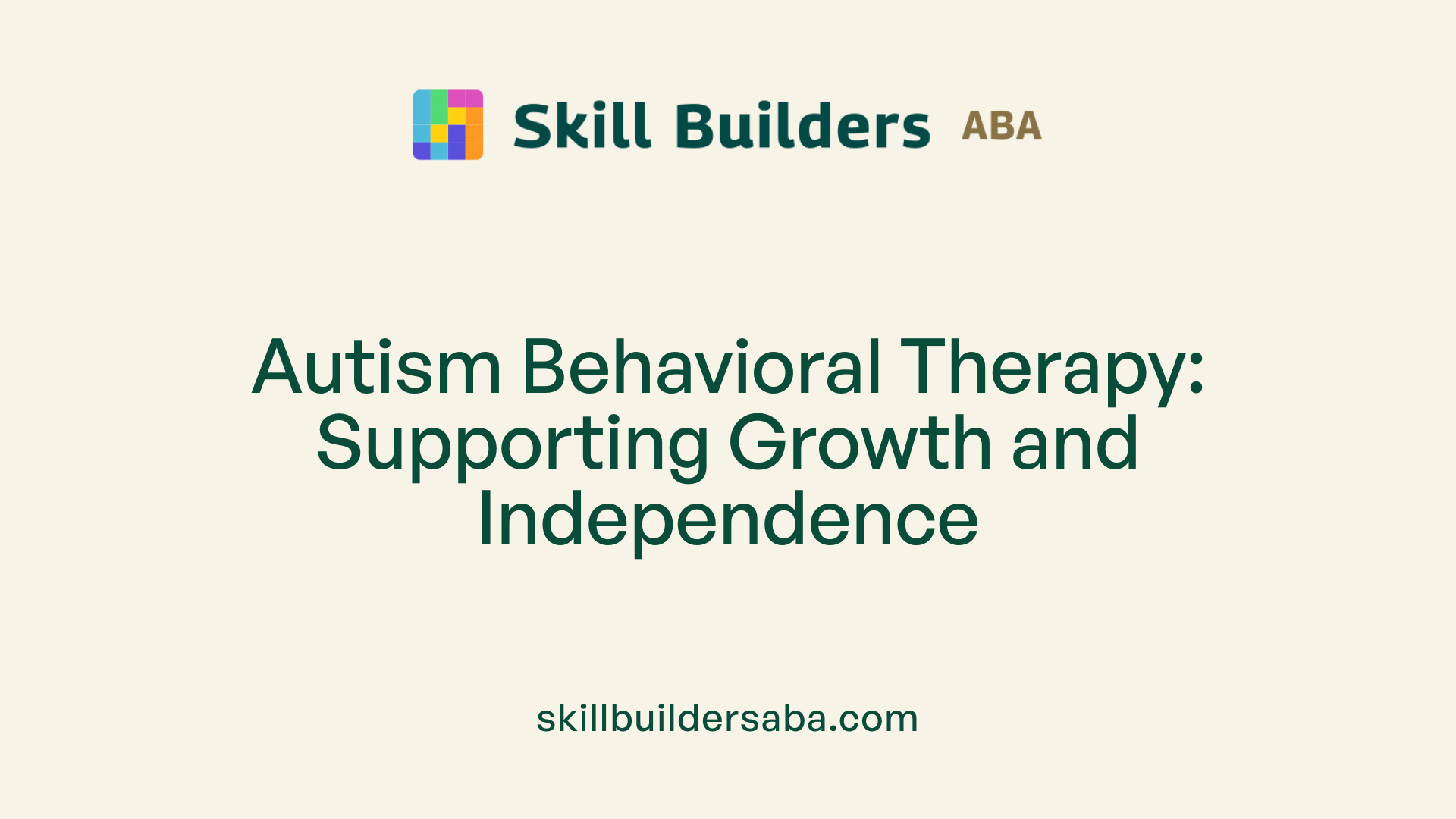
What is autism behavioral therapy?
Autism behavioral therapy, often rooted in Applied Behavior Analysis (ABA), is a scientifically supported method designed to improve specific behaviors and skills in children with autism spectrum disorder (ASD). This therapy focuses on understanding the reasons behind behaviors and how they are shaped by the environment. Using techniques like positive reinforcement, it encourages helpful behaviors while reducing those that might be harmful.
How does behavioral therapy support skill development in autism?
Behavioral therapy aims to develop crucial life skills in areas such as communication, social interaction, self-care, and academics. By tailoring interventions to each child's needs, it promotes gradual and meaningful progress. The therapy also addresses challenges related to sensory integration by helping children better manage their reactions to sensory input, which often affect their daily functioning and comfort.
In what settings is behavioral therapy provided and how is it personalized?
This therapy can be delivered in multiple settings, including at home, in schools, or community environments, involving parents and caregivers in the process to ensure consistency. Personalization is key, as therapy programs are adapted to fit the unique abilities, preferences, and goals of each child.
What is the link between behavior therapy and sensory integration challenges?
Children with autism frequently experience sensory integration difficulties, resulting in behaviors like avoidance of certain textures or over-reactivity to sounds. Behavioral therapy addresses these sensory processing challenges by integrating strategies that help children organize sensory input, improve their comfort, and reduce problematic behaviors. This combined approach enhances overall functioning and quality of life.
Applied Behavior Analysis (ABA): Evidence-Based Strategies in Autism Therapy
How does applied behavior analysis (ABA) therapy support individuals with autism?
Applied Behavior Analysis (ABA) is a widely recognized therapy for individuals with autism. It uses evidence-based strategies to encourage positive behaviors and develop crucial skills such as communication, socialization, and daily living abilities. ABA reduces problematic behaviors by applying reinforcement techniques tailored to each individual's needs.
Techniques and approaches within ABA
Modern ABA incorporates play-based and naturalistic methods, making therapy engaging and enjoyable. By integrating learning opportunities into natural settings, therapists create a comfortable environment that supports skill acquisition and generalization. Techniques include discrete trial training, modeling, and positive reinforcement.
Focus on early intervention and naturalistic methods
Early intensive ABA intervention has demonstrated significant improvements, especially for children who are nonverbal or less severely affected by autism. Early therapy promotes enhanced language development, social interaction, and adaptability, increasing long-term functional independence.
Respecting individuality and emotional wellbeing in ABA
Contemporary ABA approaches prioritize respecting the child's emotional wellbeing and individuality. Therapists emphasize building on personal strengths rather than enforcing conformity. This shift aims to foster motivation, promote positive self-esteem, and support the unique needs of each child.
In summary, ABA therapy provides a scientifically supported framework that assists individuals with autism by promoting independence and enhancing quality of life through personalized and evidence-based interventions.
Professionals Delivering Autism Behavioral Therapy: Roles and Expertise
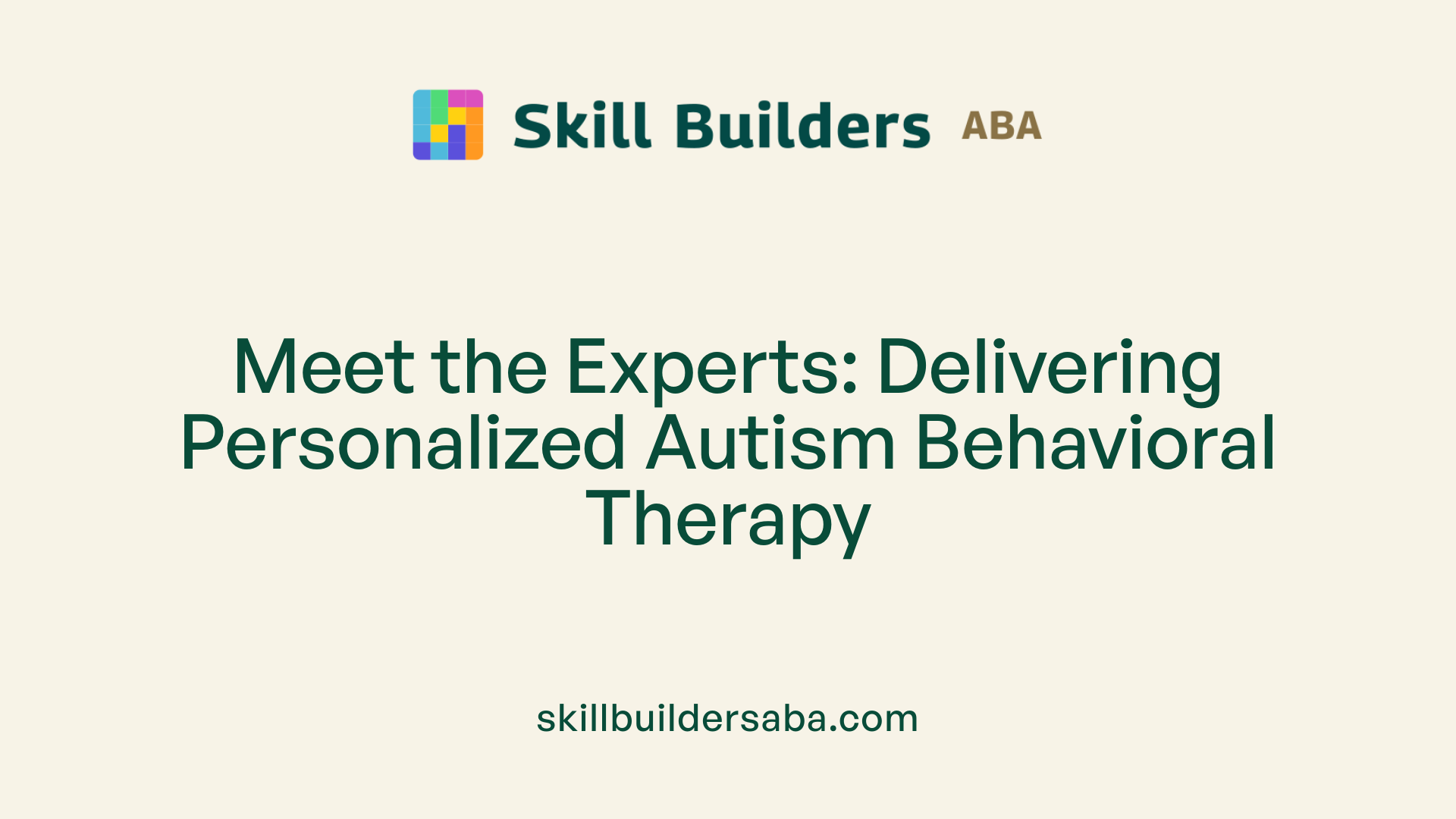
Who provides autism behavioral therapy?
Autism behavioral therapy is primarily offered by professionals trained in Applied Behavior Analysis (ABA), including Board Certified Behavior Analysts (BCBAs), behavior therapists, and specialized autism interventionists. These experts craft personalized therapy plans based on well-established ABA methods that emphasize positive reinforcement and careful analysis of behaviors to foster progress.
Importance of qualified credentials and training
Qualified providers hold certifications like BCBA to ensure they possess the skills needed to design effective interventions. Continuous training is essential, as it integrates evolving research and techniques, including sensory-friendly methods that accommodate sensory processing challenges common in autistic individuals.
Integration with sensory-friendly approaches in therapy settings
Sensory integration plays a vital role in autism therapy. Professionals often collaborate with occupational therapists who specialize in sensory integration therapy, creating environments that reduce sensory overload. These sensory-friendly settings help children regulate their responses and participate more fully in behavioral therapy.
Access and coordination of care
Obtaining autism behavioral therapy involves steps such as medical evaluations, insurance approvals, and finding reputable providers with appropriate credentials. Coordination between behavior therapists, occupational therapists, and families is crucial to deliver comprehensive care that addresses both behavioral and sensory needs, thus improving communication, social engagement, and overall quality of life.
Sensory Integration Challenges in Autism and Their Impact
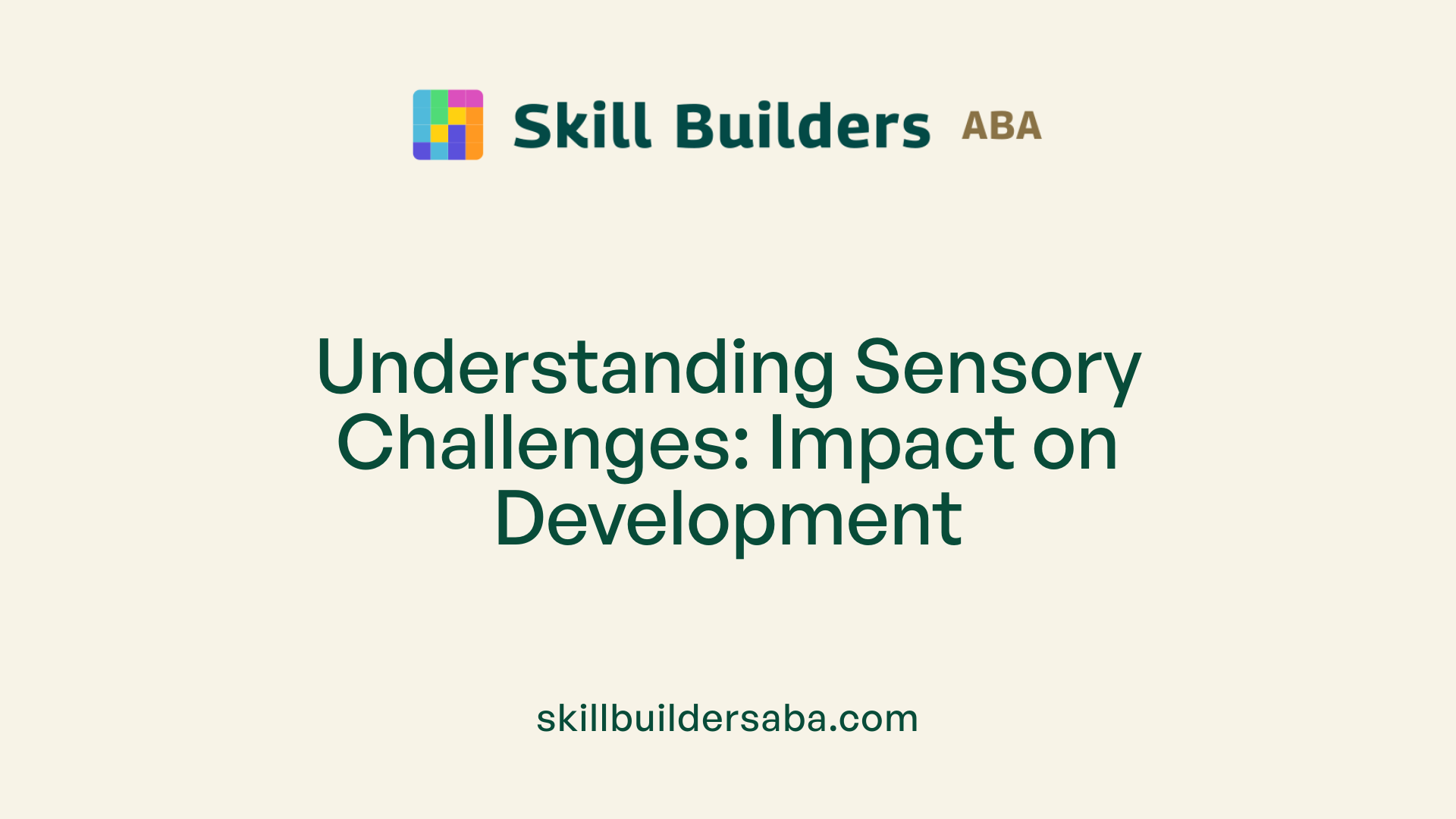
What is sensory integration and what happens when it doesn't function properly?
Sensory integration is the brain's way of processing sensory information from the environment, such as touch, movement, and sound. When sensory integration doesn't work well, a person may either overreact or underreact to sensory inputs. This sensory dysfunction can create challenges in daily life.
What behaviors might indicate sensory processing difficulties?
Common signs include rocking, spinning, and hand-flapping. Other behaviors related to sensory challenges are avoiding certain textures or touches, showing sensitivity to sounds, appearing clumsy, or withdrawing from sensory experiences.
How do sensory integration problems affect development?
Difficulties with sensory processing can impact motor skills, speech, language development, and even academic achievement. These effects may appear as coordination issues, delays in communication, or challenges in learning environments.
Why are these sensory challenges especially relevant in autism?
Sensory integration difficulties are frequently seen in individuals with autism. These sensory challenges can influence their strengths and the obstacles they face daily, shaping the way they interact with the world and affecting their comfort and functioning in various settings.
Designing Sensory-Friendly Spaces: Creating Calm and Comfort for Autistic Children

Key Features of Sensory-Friendly Healthcare and Educational Environments
Sensory-friendly spaces are thoughtfully designed to minimize sensory overload and support comfort for autistic children. Essential features include soft lighting that reduces glare and harsh contrasts, and sound management strategies such as acoustic tiles or noise-canceling headphones to eliminate overwhelming noise.
In healthcare settings, providing quiet waiting areas enhanced with calming elements like weighted blankets and fidget toys helps children feel more secure and relaxed. Educational spaces similarly benefit from sensory seating options, crash pads, and tactile objects that encourage safe sensory exploration.
Elements Such as Lighting, Sound, Textures, and Calming Tools
Lighting plays a critical role: using dimmable LEDs or natural light helps regulate sensory input. Soundscapes with soothing background music or white noise reduce startling noises commonly found in busy environments.
Texture variety is another vital component. Soft plush toys, reversible sequin wall panels, and textured floor tiles provide sensory stimulation that children can control. Weighted pillows and blankets offer calming deep pressure input, aiding emotional regulation.
Use of Sensory Rooms and Their Therapeutic Benefits
Sensory rooms are dedicated spaces filled with multi-sensory equipment tailored to individual needs. Typical features include bubble tubes, projection lights, inflatable balls, and immersive tactile surfaces. These rooms offer controlled sensory input, enabling children to self-regulate and reduce anxiety.
Sensory rooms support the development of motor skills, communication, and cognitive function while complementing other therapies such as occupational or speech therapy. They serve as safe, calming havens where children expend energy, improve focus, and practice social skills.
Supporting Emotional Regulation and Reducing Sensory Overload
By offering a controlled environment with customizable sensory experiences, sensory-friendly spaces help autistic children manage sensory sensitivities more effectively. This environment promotes relaxation and emotional well-being by preventing overwhelming stimuli and encouraging self-expression.
Comprehensive staff training on autism awareness and use of visual supports like picture schedules further enhance these spaces' effectiveness. Together, these features create nurturing environments that foster comfort, learning, and growth for autistic children.
| Feature | Description | Benefit for Autistic Children |
|---|---|---|
| Soft Lighting | Dimmable LEDs, natural light | Reduces sensory overload and visual discomfort |
| Sound Control | Acoustic tiles, noise-canceling headphones | Minimizes anxiety from loud, sudden noises |
| Textures | Plush toys, sequin panels, tactile floor tiles | Offers manageable sensory input and tactile exploration |
| Calming Tools | Weighted blankets, bubble tubes, projection lights | Provides calming deep pressure and visual stimuli |
| Sensory Rooms | Multi-sensory equipment with specialized furniture | Enhances self-regulation, focus, and social skills |
| Staff Training & Visual Supports | Autism awareness programs and picture schedules | Improves communication and reduces patient anxiety |
Sensory Rooms: Specialized Spaces Supporting Regulation and Development
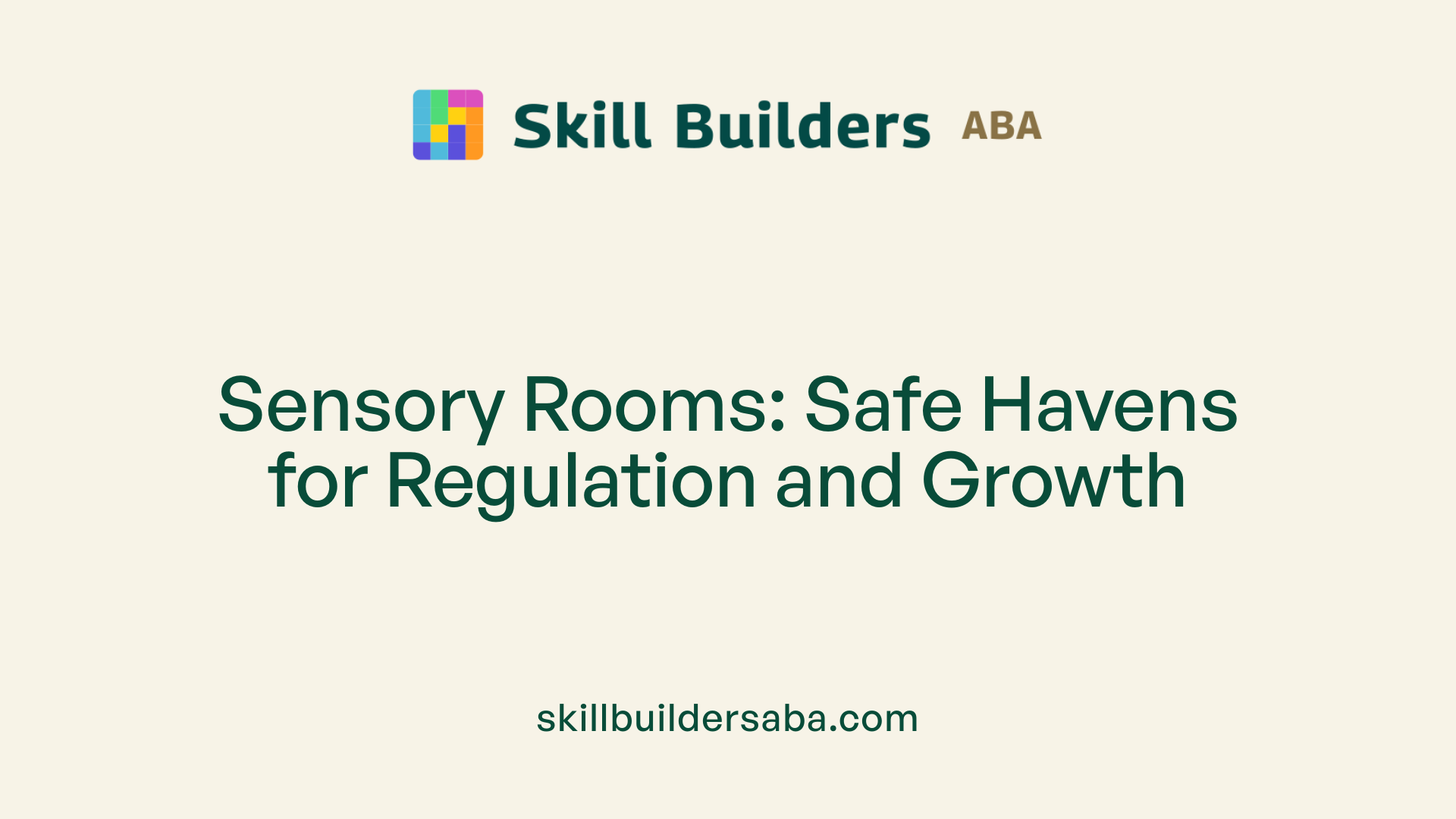
What are sensory rooms and what is their purpose?
Sensory rooms are specially designed spaces equipped with sensory-friendly toys, furniture, and lighting. They aim to help children, especially those with autism, regulate emotions, calm down, and channel energy through controlled sensory stimulation. These rooms provide a calming and engaging environment that supports relaxation and sensory integration.
What kinds of sensory tools and furniture are used in sensory rooms?
Sensory rooms feature a variety of tools and furniture tailored to meet diverse sensory needs. Common elements include:
- Sensory seating and beanbag chairs for comfort and calming pressure
- Liquid floor tiles and crash pads for tactile and proprioceptive input
- Reversible sequin wall toys and plush sensory toys for tactile exploration
- LED light tubes, bubble tubes, and projection lights providing visual stimulation
- Weighted blankets and pillows offering soothing deep pressure
- Inflatable balls and textured objects for motor skill engagement
These carefully chosen components provide multi-sensory experiences that can be adapted to individual preferences.
How do sensory rooms benefit children in terms of focus, anxiety, and motor skill development?
Sensory rooms help reduce anxiety by providing a controlled space where children can select sensory inputs that feel comforting, thereby minimizing sensory overload. This stress reduction supports emotional well-being and can improve focus and concentration. Moreover, by engaging with various sensory tools, children enhance their sensory integration and motor skills as they interact with tactile, visual, and proprioceptive stimuli. This environment also promotes social skills and cognitive development by fostering calmness and attention.
How are sensory rooms integrated with other therapies?
Sensory rooms serve as valuable complements to therapies such as Applied Behavior Analysis (ABA), speech therapy, and occupational therapy. They offer children a supportive setting to practice and reinforce skills learned in these treatments. Occupational therapists often incorporate sensory room activities into personalized sensory diets, tailoring experiences to individual developmental goals. By combining sensory rooms with specialized therapies, children receive comprehensive support for regulation, communication, and motor development.
Personalizing Autism Behavioral Therapy Through Sensory Accommodations
How is autism behavioral therapy customized for each individual?
Autism behavioral therapy is customized by carefully assessing each child's unique sensory profile, strengths, challenges, and interests. Therapists develop individualized intervention plans that focus on communication, social skills, and behavior regulation tailored to the child’s sensory preferences and sensitivities.
Customization of therapy plans based on individual sensory needs
Therapists integrate sensory considerations by identifying whether a child is over- or under-responsive to tactile, auditory, visual, vestibular, or proprioceptive stimuli. For example, a child sensitive to sounds might benefit from quieter environments or noise-canceling headphones during sessions. Sensory-friendly adaptations ensure the therapy space supports comfort, reducing overstimulation and enabling more effective learning.
Using sensory-friendly modifications to enhance therapy effectiveness
Incorporating sensory modifications such as soft lighting, soothing music, or tactile tools creates a calming atmosphere that helps regulate sensory input. Tailoring therapy activities with sensory toys, weighted blankets, or textured surfaces engages children in sensory regulation, improving focus and participation. These adaptations help reduce anxiety and behavior challenges that may arise from sensory overload.
Integration of sensory supports like noise-canceling headphones and visual schedules
Practical supports including noise-canceling headphones reduce auditory distractions, while visual schedules and social stories promote understanding and predictability. These tools empower children to anticipate transitions and manage expectations, which enhances engagement and reduces stress during therapy sessions.
Family involvement and ongoing adjustments for holistic support
Families are essential collaborators in customizing therapy to support sensory and behavioral needs across settings. Parent training and coaching enable caregivers to implement strategies consistently at home. Therapists continuously monitor progress and adjust sensory accommodations and goals to align with the child’s developmental changes and preferences.
This personalized and sensory-informed approach enhances the effectiveness of autism behavioral therapy by creating supportive environments that respect each child's sensory world and promote meaningful growth.
The Future of Support: Harmonizing Therapy and Environment
Sensory-friendly spaces play an essential role in supporting autistic children by providing environments tailored to their sensory processing needs. When combined with evidence-based autism behavioral therapies such as ABA, these environments enhance the effectiveness of interventions and promote well-being, learning, and engagement. As awareness grows, the integration of sensory accommodations into therapy settings, schools, healthcare, and community spaces promises a more inclusive and supportive future. By investing in both personalized therapeutic approaches and thoughtfully designed sensory spaces, we can better empower autistic children to thrive and reach their full potential.
References
- Sensory Integration in Autism Spectrum Disorders
- Creating Sensory-Friendly Health Care Environments for ...
- The sensory room
- The Power of Sensory Rooms for Autism and ADHD
- Applied Behavior Analysis (ABA)
- Treatment and Intervention for Autism Spectrum Disorder
- The Top 10 Reasons Children With Autism Deserve ABA
- 6 Benefits of ABA Therapy for Children with Autism
- The Controversy Around ABA
- Efficacy of Interventions Based on Applied Behavior ...
.svg)



